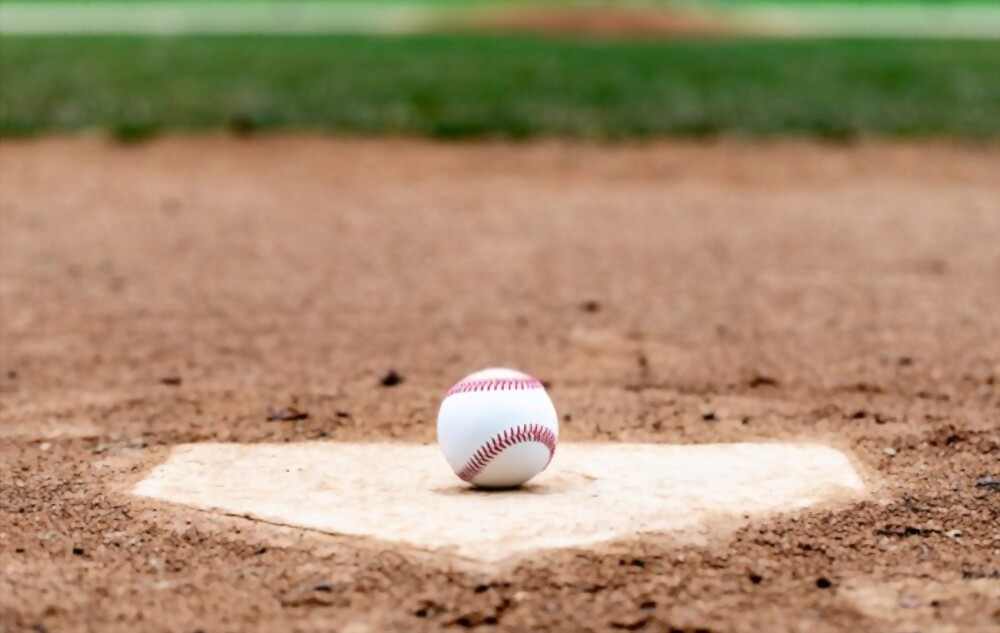The dimensions of the home plate are regulated by Major League Baseball (MLB) and are crucial for the proper functioning of the game.
The Baseball Home Plate stands out from the other bases due to its unique five-sided structure. It plays a crucial role in the game, as it is used to determine the strike zone.
Home plate is an essential part of any baseball field and it has a standard size. It measures 17 inches (43.18 cm) in width and length, with a pointed rear that has angled edges of 12 inches (30.48 cm) and short adjacent edges measuring 8.5 inches (21.59 cm). The height of the home plate is just 1 inch (2.54 cm).
In this article, we will take a closer look at the dimensions of the baseball home plate and how they are measured.
What Are The Dimensions And Angles Of Home Plate?
Home base in Major League Baseball is marked by a five-sided slab of whitened rubber, as specified in the Official Baseball Rules.
This 17-inch square has had two of its corners removed, resulting in one edge being 17 inches long and the two adjacent sides measuring 8.5 inches, while the remaining two sides have been set at an angle to create a point while measuring 12 inches.

The home plate should be settled at the point where the first base and third base lines are intersecting each other while extending from the home base. The two edges of 12 inches should coincide with the first and third baseline to create a right angle while 17 inches edge is facing the pitcher plate.
The top edges of the home base must be beveled, and the base must be securely fixed to the ground surface.
What Is Home Plate in Baseball?
In baseball, home plate is the final base that a player must touch in order to score a run. It is a five-sided slab of white rubber that sits in the middle of the diamond-shaped infield.
The home plate is where the pitcher stands to throw the ball, and it is also where the catcher receives the ball during play. When a batter hits the ball, they must run around the bases and touch home plate in order to score a run.
Related: Long Jump Pit Dimensions
Do All Leagues Have The Same Home Plate Size?
The dimensions of home plate are standardized across all levels of organized baseball, including professional, collegiate, and youth leagues. According to the official rules of baseball, as set forth by organizations such as Major League Baseball (MLB) and the National Collegiate Athletic Association (NCAA), the home plate must be 17 inches wide and 17 inches deep.
Comparing The Home Plate With Other Baseball Bases
Many people mistakenly believe that all four baseball bases are the same size, but this is not true. In reality, each base has its own unique dimensions.
The home plate is the most unique base on a baseball field as it has a pentagonal shape, differentiating it from the other three bases which are square with slightly rounded corners. The other bases have a uniform width of 15 inches and boast a slightly raised profile with an overall depth ranging from 3 to 5 inches.
You may be curious as to why the home plate differs in shape and size from the other bases. The simple answer is that the home plate is placed in a sensitive part of the baseball diamond.
The corner of the plate is an important part of baseball, as it marks the strike zone. If the pitcher fails to throw the ball within a reasonable distance from the corner of the strike zone, as judged by the umpire, it will be declared a ball instead of a strike.
Baseball Field Marks and Distance Between Home Plates
In a regulation baseball field, the distance between home plate and the other bases is 90 feet. This distance applies to both first base and third base, as well as to second base. Additionally, the distance from home plate to the pitcher’s plate, also known as the pitcher’s rubber, is 60 feet 6 inches. These distances are regulated by Major League Baseball (MLB) and other governing bodies of organized baseball and are considered standard for all levels of play, including professional, collegiate, and youth leagues.
The distance between home plate and the backstop or fencing behind home plate can vary depending on the park, but typically it’s around 60 feet. The distance between bases and the foul lines, which marks the fair territory and the foul territory, is also regulated and typically it’s around 320 feet to the power alleys and around 400 feet to center field.
It’s important to note that the dimensions of a baseball field may vary in non-regulation fields, such as youth fields or informal games, but in general, these are the standard distances you would expect to find in a regulation baseball field.